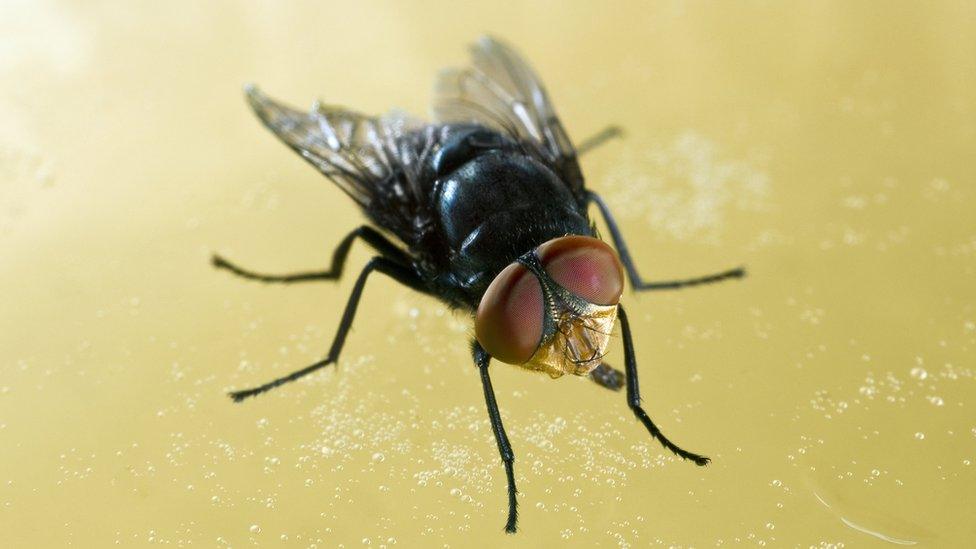Sterile flies released in Florida to combat flesh-eating worm
- Published

Key deer are a sub-species of white-tailed deer that now live only in the Florida Keys.
Authorities in Florida have been releasing sterile flies in a bid to stamp out a flesh-eating livestock disease that has returned to the US for the first time in 30 years.
The surprise outbreak of screwworm has killed off more than 100 Key deer in the Florida Keys, and there are fears it could spread to livestock.
Scientists release the sterile flies so that they mate with the females but produce no offspring – killing off populations.
Screwworm was eradicated from the US in the late 60s, after it caused hundreds of millions of dollars' worth of damage to agriculture.
It is a grisly pest. The "worm" is the larval stage of the blowfly, which burrows its way into live flesh like a corkscrew, effectively eating animals alive. In rare cases, it can also infest humans.
The US had been free of the parasite for decades until late 2016, when cases were confirmed in the endangered Key deer, a sub-species of white-tailed deer that now lives only in the Florida Keys.
Buffer zone
The US Department of Agriculture (USDA) told BBC News that it was releasing more than three million sterile flies twice a week in order to quell the infestation before it spreads further.
Pamela Manns, a public affairs specialist for the USDA said: "We don’t know exactly how long this process will take, but eradication efforts like this can last four to six months. It is not uncommon and we expect that to be the case here."
The solution being used now is the same one developed in the 1950s that eradicated screwworm from the US and other parts of the Americas.
Scientists breed large numbers of blowflies, blast them with radiation to sterilise them and then release them into the wild. The sterile males mate with native females but can produce no viable progeny, causing populations to crash.
After wiping out the fly from US territory in the 60s, America subsequently worked to eliminate the flies from Mexico, Central America and the Caribbean. Since then the US has maintained a buffer zone across the Darien gap in Panama between the screwworm-free north and South America, where the flies still roam.

The Screwworm fly's scientific name is Cochliomyia hominivorax
In the late 1980s, sterile flies were released in Louisiana, Florida and Puerto Rico after isolated cases were reported. But the USDA confirmed that this outbreak, in the National Key Deer Refuge in Big Pine Key, is the first local infestation of screwworm in the United States for 30 years.
Florida has declared an agricultural state of emergency in Monroe County, the site of the infestation. Ms Manns said that since 11 October, USDA response teams have carried out 87 releases at 25 sites in the Florida Keys.
Not only are authorities concerned about the pest spreading to livestock, but also the threat posed to this last population of Key deer. The size of the herd had been estimated at about 1,000, but more than 120 deer have died since the beginning of the outbreak.
Park managers at the refuge have also begun erecting enclosures in case deer need to be corralled, external in a bid to preserve the species.
The source of the current outbreak remains unclear. But as a hub for international cargo and passenger travel, and sub-tropical climate, Florida remains at-risk from such outbreaks.